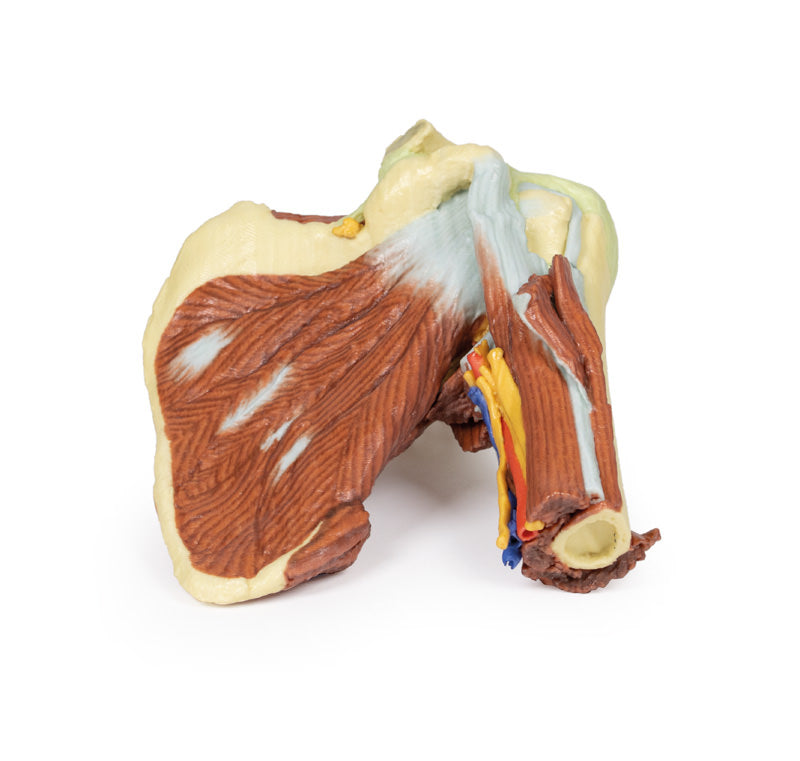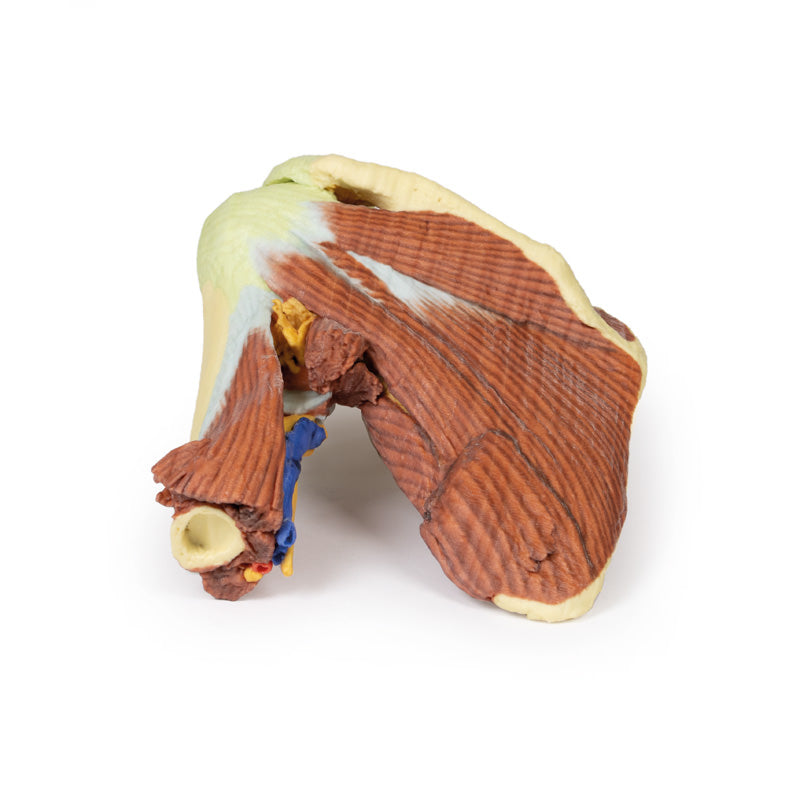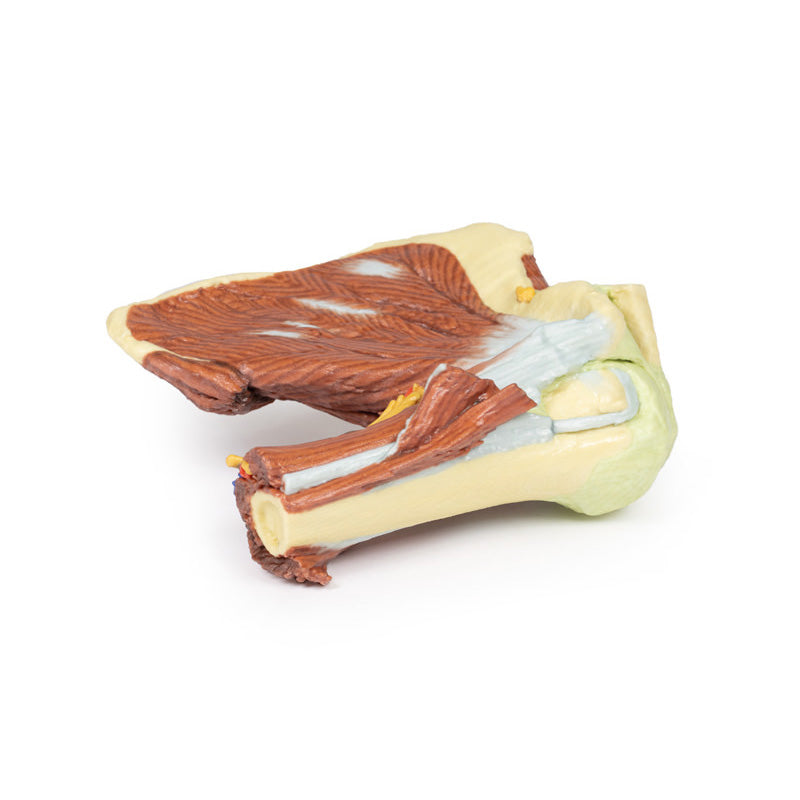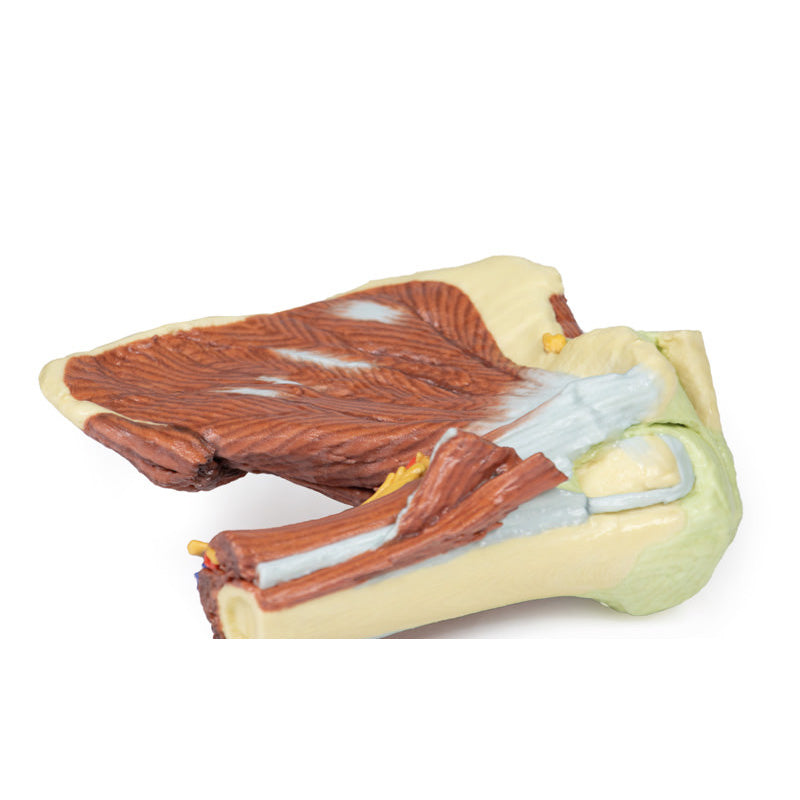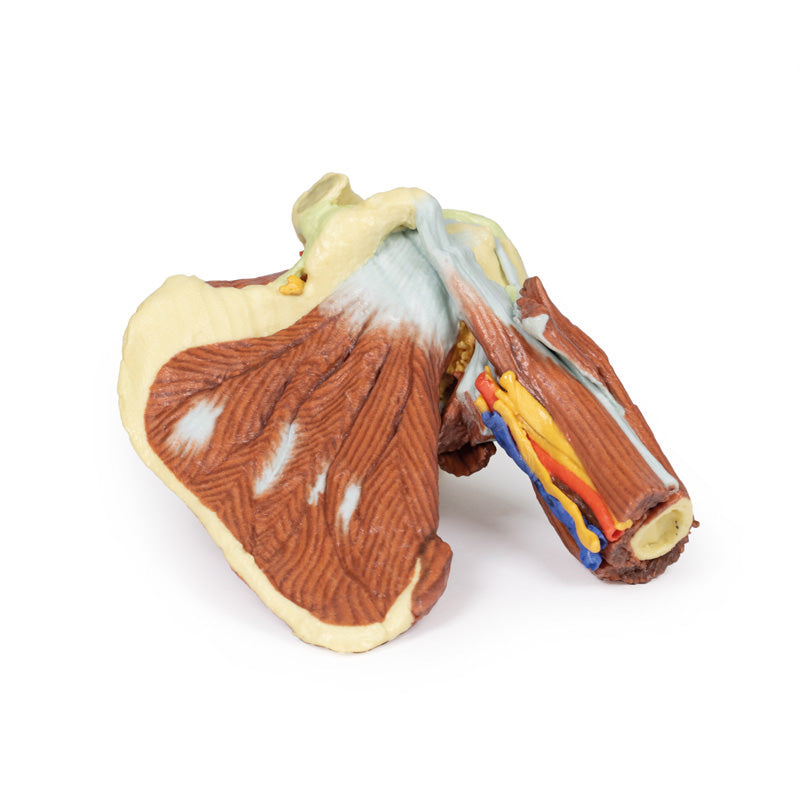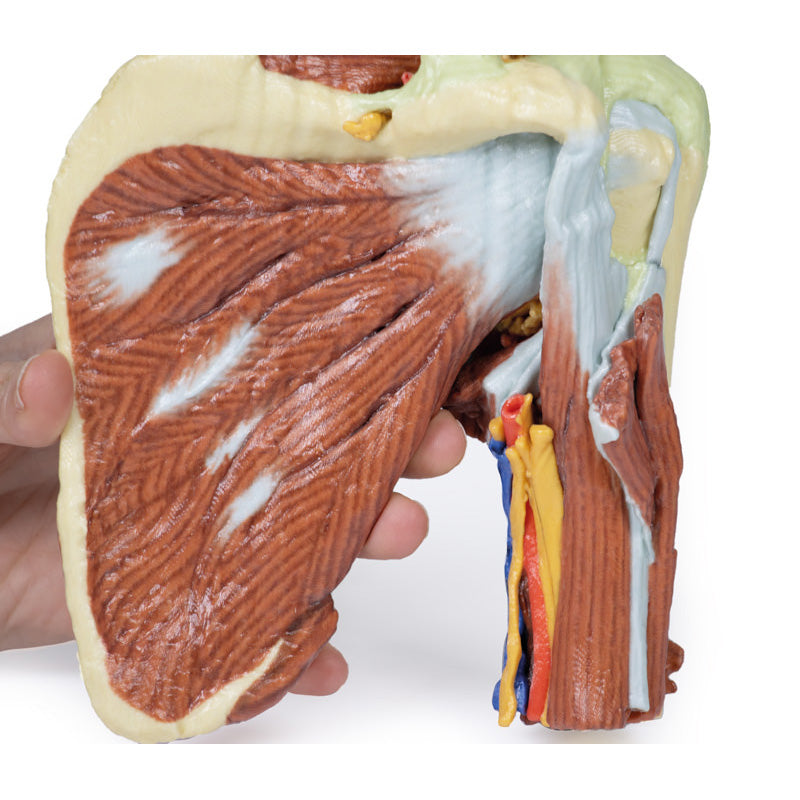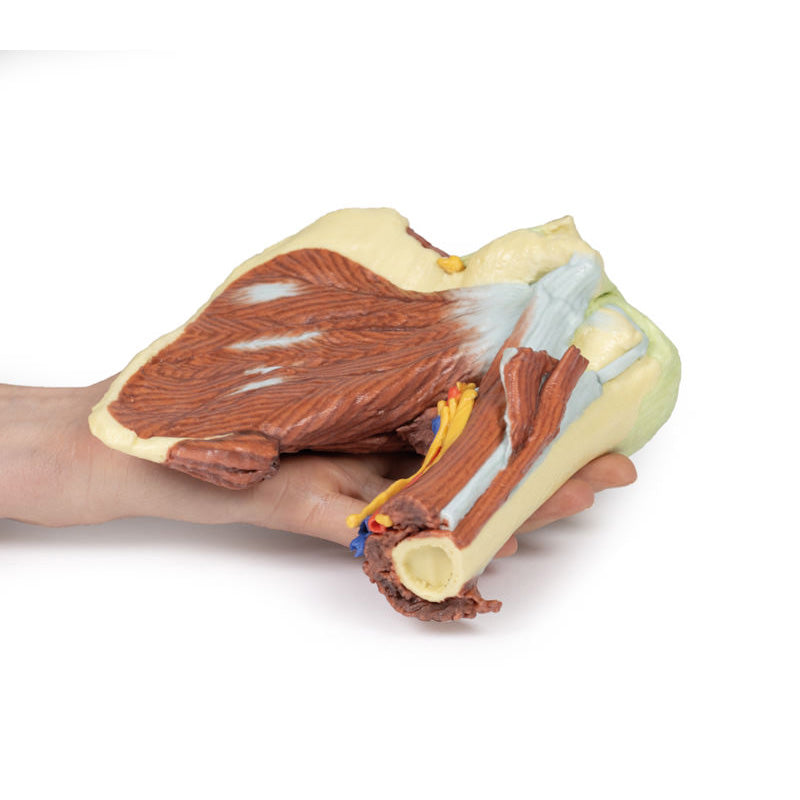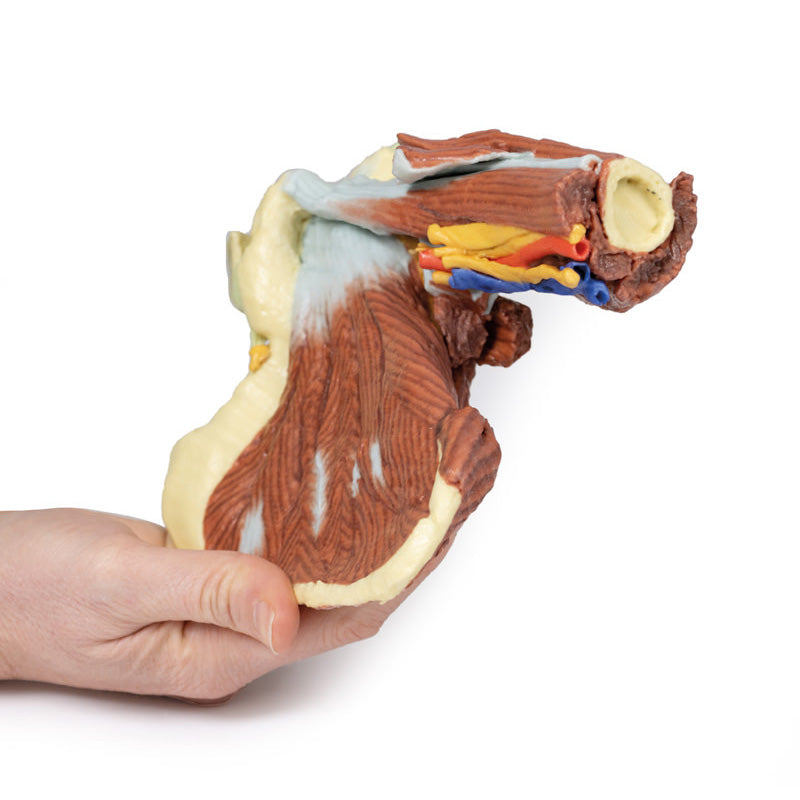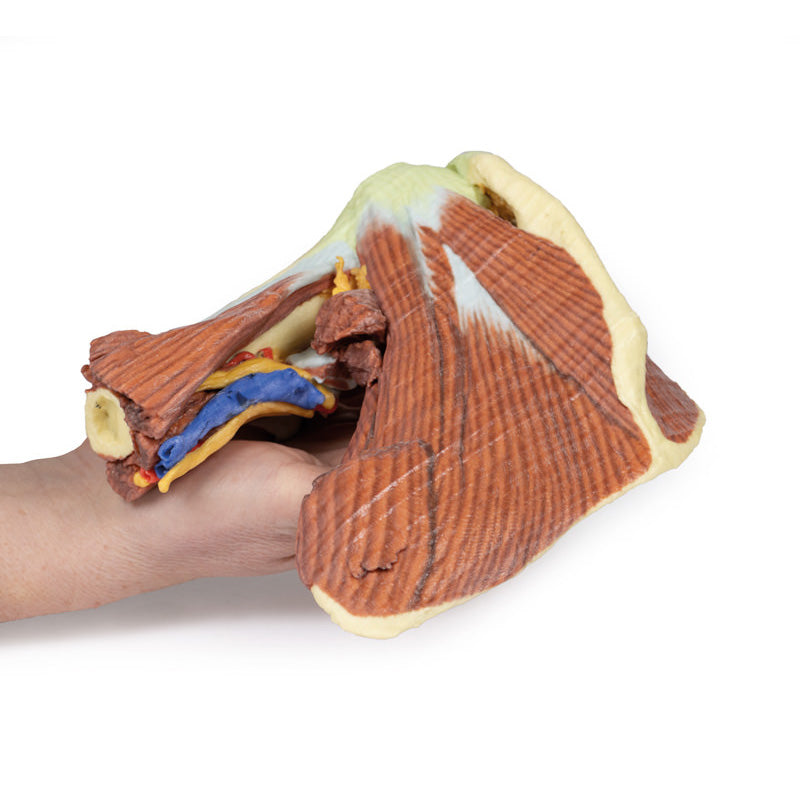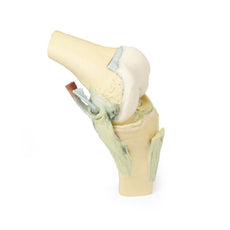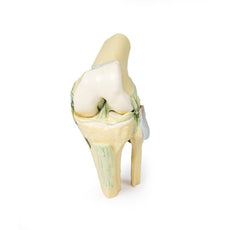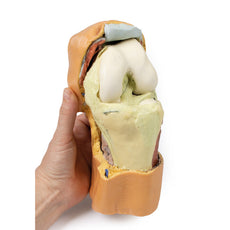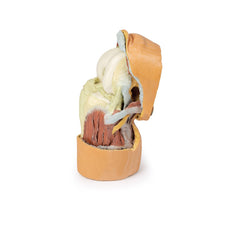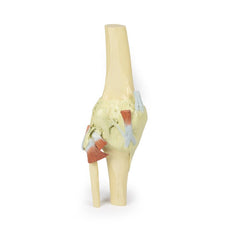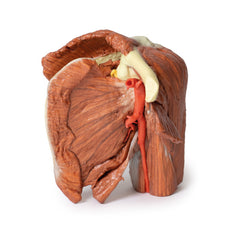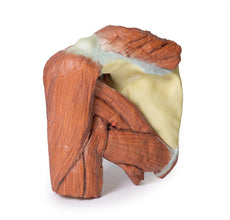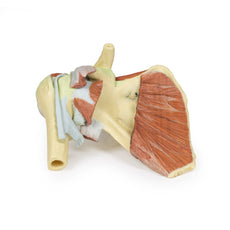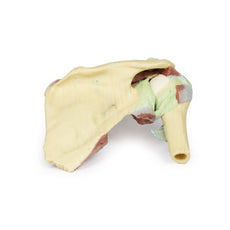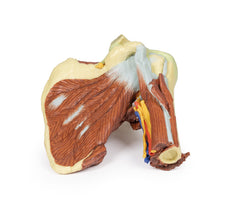Your shopping cart is empty.
3D Printed Shoulder with deep dissection of the left shoulder
The suprascapular nerve and artery are visible passing deep to, and superficial to, the superior transverse scapular ligament respectively. The multipennate subscapularis muscle is fully exposed with its tendinous insertion visible deep to the short head of the biceps brachii muscle.
The insertion of the deltoid is preserved just overlying the long head of the biceps brachii, which ascends through the bicipital groove towards the glenohumeral joint capsule. Adjacent to the short head of the biceps brachii is the neurovascular bundle of the brachial artery, brachial vein, and terminal nerves of the brachial plexus (radial, ulnar, median, and the medial antebrachial cutaneous).
The tendon of the latissimus dorsi, teres major, teres minor and long head of the triceps brachii muscles have been cut enhance the visibility of the medial aspect of the humerus, including the passage of the axillary nerve into the quadrangular space, the origin of the profunda brachii artery accompanying the radial nerve, and the insertion of the short head of the triceps brachii muscle.
On the posterior aspect, the infraspinatus and supraspinatus muscles are fully exposed from their origins to insertions on the proximal humerus. The glenohumeral joint capsule is intact, with the extracapsular ligaments (e.g., acromioclavicular, coracoacromial, and coracoclavicular [both conoid and trapezoid portions]) preserved.
Download:
GTSimulators by Global Technologies
Erler Zimmer Authorized Dealer

8.0 lb
3D Printed Shoulder with deep dissection of the left shoulder
Item # MP1525
$1,063.00
$1,182.00
You save $119.00
Need an estimate?
Click Add To Quote

Features & Specifications
-
by
A trusted GT partner -
FREE Shipping
U.S. Contiguous States Only -
3D Printed Model
from a real specimen -
Gov't pricing
Available upon request
Frequently Bought Together
3D Printed Shoulder model deep dissection of the left shoulder joint, musculature, and associated nerves and vessels
This 3D printed specimen presents a deep dissection of the left shoulder joint, musculature, and associated nerves and vessels of the scapula and proximal humerus (to near midshaft). Anteriorly, the deltoid muscle has been detached from its origin to expose the underlying deeper structures of the shoulder joint and rotator cuff musculature.The suprascapular nerve and artery are visible passing deep to, and superficial to, the superior transverse scapular ligament respectively. The multipennate subscapularis muscle is fully exposed with its tendinous insertion visible deep to the short head of the biceps brachii muscle.
The insertion of the deltoid is preserved just overlying the long head of the biceps brachii, which ascends through the bicipital groove towards the glenohumeral joint capsule. Adjacent to the short head of the biceps brachii is the neurovascular bundle of the brachial artery, brachial vein, and terminal nerves of the brachial plexus (radial, ulnar, median, and the medial antebrachial cutaneous).
The tendon of the latissimus dorsi, teres major, teres minor and long head of the triceps brachii muscles have been cut enhance the visibility of the medial aspect of the humerus, including the passage of the axillary nerve into the quadrangular space, the origin of the profunda brachii artery accompanying the radial nerve, and the insertion of the short head of the triceps brachii muscle.
On the posterior aspect, the infraspinatus and supraspinatus muscles are fully exposed from their origins to insertions on the proximal humerus. The glenohumeral joint capsule is intact, with the extracapsular ligaments (e.g., acromioclavicular, coracoacromial, and coracoclavicular [both conoid and trapezoid portions]) preserved.
Download:
GTSimulators by Global Technologies
Erler Zimmer Authorized Dealer
Shipping Dimensions and Weight:
The models are very detailed and delicate. With normal production machines you cannot realize such details like shown in these models.
The printer used is a color-plastic printer. This is the most suitable printer for these models.
The plastic material is already the best and most suitable material for these prints. (The other option would be a kind of gypsum, but this is way more fragile. You even cannot get them out of the printer without breaking them).The huge advantage of the prints is that they are very realistic as the data is coming from real human specimen. Nothing is shaped or stylized.
The users have to handle these prints with utmost care. They are not made for touching or bending any thin nerves, arteries, vessels etc. The 3D printed models should sit on a table and just rotated at the table.
- Size: 21 x 21 x 14 in
- Weight: 5 lb.
The models are very detailed and delicate. With normal production machines you cannot realize such details like shown in these models.
The printer used is a color-plastic printer. This is the most suitable printer for these models.
The plastic material is already the best and most suitable material for these prints. (The other option would be a kind of gypsum, but this is way more fragile. You even cannot get them out of the printer without breaking them).The huge advantage of the prints is that they are very realistic as the data is coming from real human specimen. Nothing is shaped or stylized.
The users have to handle these prints with utmost care. They are not made for touching or bending any thin nerves, arteries, vessels etc. The 3D printed models should sit on a table and just rotated at the table.

by — Item # MP1525
3D Printed Shoulder with deep dissection of the left shoulder
$1,063.00
$1,182.00
Add to Cart
Add to Quote



